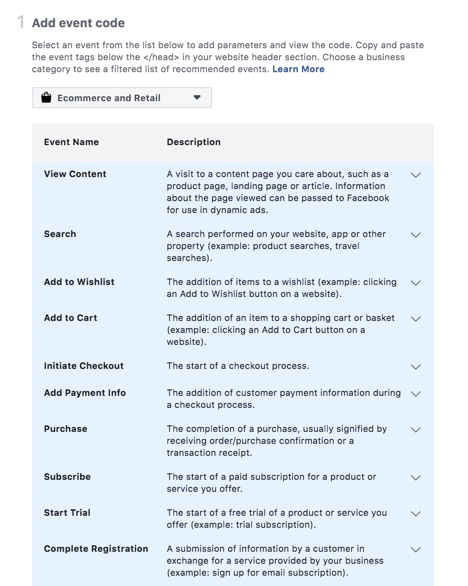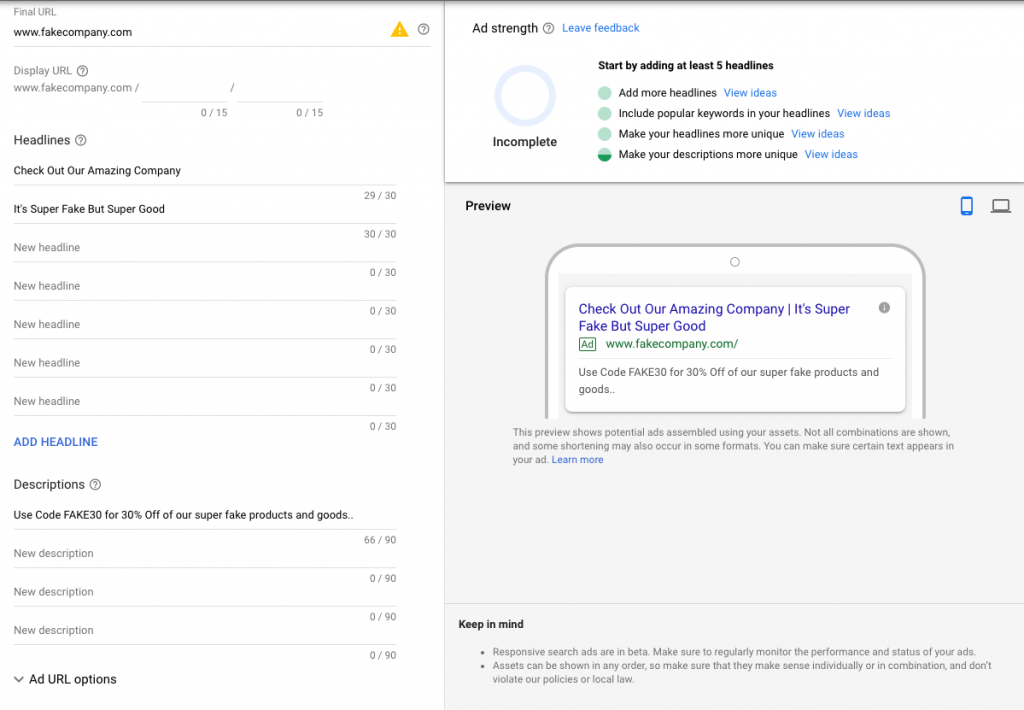Optimizing for featured snippets might seem mysterious, but capturing them is not much different than the on-page SEO we’ve been doing for years. I would say featured snippets are a microcosm of classic “10 blue links” SEO. Everything we’re doing to optimize for a featured snippet is the same as a whole page, just smaller.
The way I like to frame the topic is beginning with the text. In classic SEO, we’re focusing on a single page; here we’re focusing on a single paragraph. Instead of trying to get into the first 10 results, we want to occupy a single position. And just like page titles and meta descriptions, there are character (or pixel width) limits we need to be aware of. The “content is king” rule also applies here. Our snippet text needs to be high quality and beneficial to users to have any hope of sticking.
There is even an analog to the second page of results for featured snippets. Later in this post, I’ll show you a trick to see which other snippets you’re competing against.
What is a Featured Snippet?
Featured snippets are short pieces of text Google extracts from pages to concisely answer queries directly in its search results. Google displays featured snippets at the top of its Organic results or in the People Also Ask feature. They come in a few formats, including paragraph, list, and table. They are also used as search results for voice queries.
Featured snippets are sometimes known as “answer boxes,” but many SEOs reserve that label for Knowledge Graph features that also occupy the space before the classic 10 blue links, or “position zero.” The key difference is that Google itself generates the content for answer boxes and featured snippets are content scraped from other websites.
Featured Snippet Formats
There are three main formats for a featured snippet: paragraph, list, and table.
The paragraph snippet is an excerpt of text from your page. Usually one to three consecutive sentences of text, but sometimes Google will stitch two excerpts from the page together. Google likes to use these for answering “What is?” intent or giving a brief description of an entity.
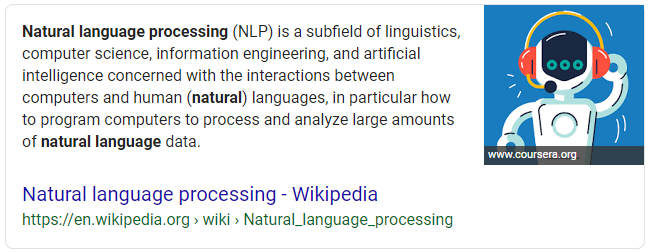
List snippets are normally taken from bullet points or numbered lists in content, but I’ve seen rare instances of Google using the section headings on a page for a list snippet. You’ll see list snippets for “How to” and “Types of” intents.
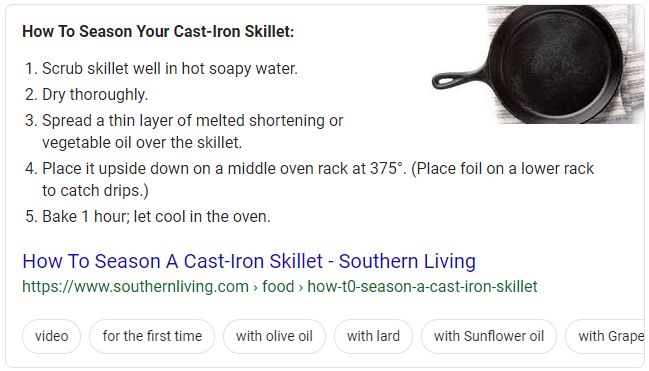
Table snippets are taken from tabular data on a page. I’ve only ever seen Google extract content from <table> tags. This can present a problem for some websites, because HTML tables can be tricky to fit into responsively designed pages; they just don’t work out of the box for mobile devices.

Eligibility
Your content must rank on the first page of Google’s search results to be eligible for a featured snippet. SEMrush and Ahrefs have done research in the past to see where the source pages of featured snippets rank, and over 99% of the time pages in the first 10 blue links are the source. However, your page doesn’t need to be the first result to be featured. Those studies found that the first result occupied the featured snippet for the query only 27-31% of the time.
User Satisfaction and Split Testing
Featured snippets are volatile. Google is frequently split testing featured snippets to see which answer users prefer. The metrics Google could be looking at are how long users are reading the snippet, how often they click on the source page of the snippet, how often users have a successful search session after seeing your snippet, or any combination of other user satisfaction signals.
This means you can’t fake it. If you want your content to be in the featured snippet position, you must have the best answer to the query.
If you’re curious to see which other candidates you’re competing against, you can use a search operator trick to see what is “next in line.” Use the keyword exclusion operator, which is just a hyphen “-” to remove the featured snippet source domain from a query. This is a handy trick to get a better idea of how many pages you’re competing against for the featured snippet.
To test this trick, let’s look at who has the featured snippet for “why is the sky blue?”
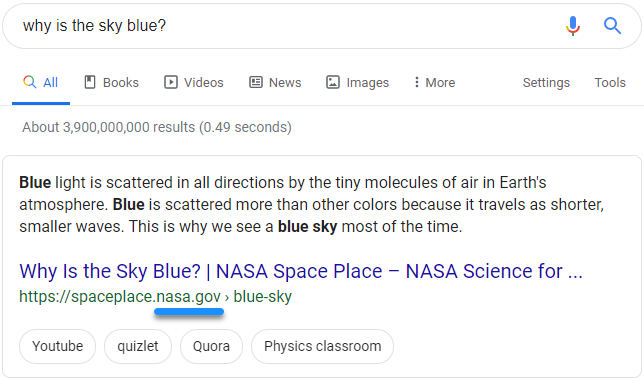
We see that NASA currently has the snippet, but who might have it if NASA didn’t have this content? Let’s add “-nasa.gov” to the query to see who else is competing:
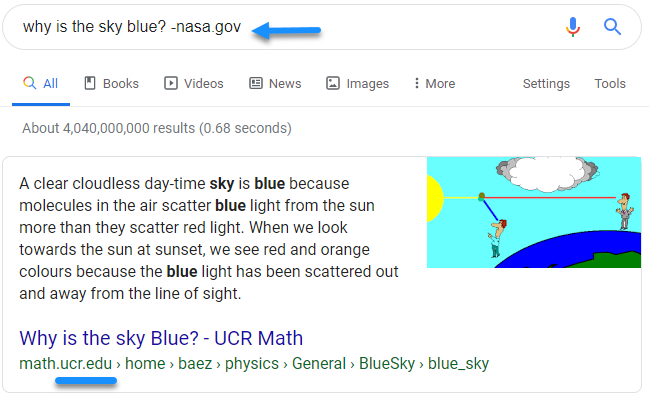
An explanation from a physicist at U.C. Riverside is also being considered. Is there anyone else? Here’s what we get when we add “-ucr.edu” to the query:
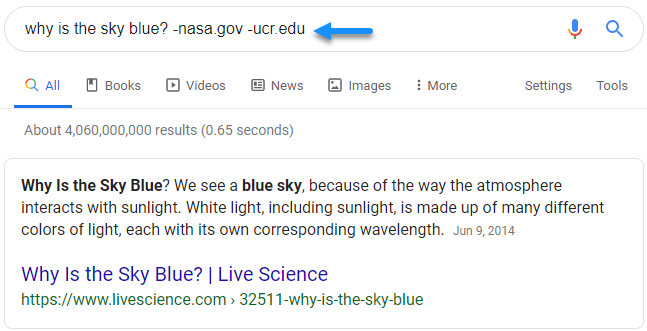
You can continue this process to see more snippets, until you run out of competitors or you reach the 32 word limit for queries like I did:
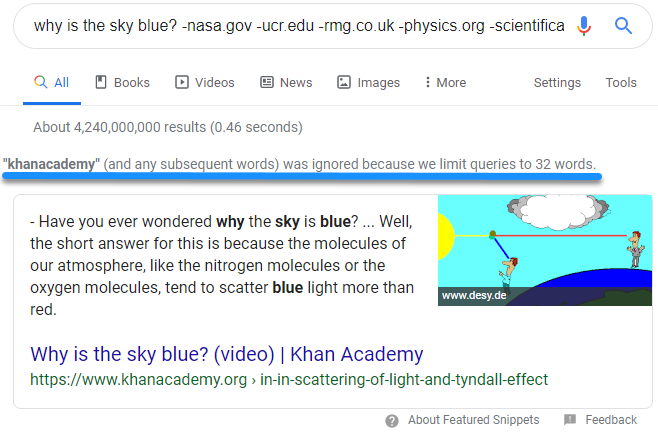
Writing Style
The best way to write content for a featured snippet is to answer the query simply and directly. Use the active voice. Don’t beat around the bush; we’re not trying to pad out a five-page essay.
Writing this way helps with readability, which will result in better usability metrics when Google evaluates the performance of your snippet. It will also help you stay under the displayable text limit.
Snippet Length Matters
Just like the page description part of a classic search result snippet, Google gives a limited amount of space to work with. There has only been a little research into the maximum amount of characters or pixels Google displays. I like this recommendation from SEMrush to use around 40 to 50 words, or around 300 characters, for paragraph snippets.
Unlike classic search result snippets, going over the display limit with your text won’t cause Google to cut off the end of a paragraph snippet. With internal testing, we’ve seen Google sometimes declines to use the text as a candidate if it’s too long. We’ve also seen success with cutting down the character count until our intended snippet text is the same length or shorter than the competitor we’re trying to displace. Fitting inside of Google’s displayable space is pretty important to being considered.
In an ideal world, we would have a featured snippet preview tool very much like the SERP snippet preview tools we have for classic snippets. I haven’t been able to find any yet. Until such a tool exists, the best practice is to look at the character counts of your competitors’ snippets and try to come in with about the same number of characters or fewer.
Another thing to keep in mind is that display limits for list snippets work differently. Google will often truncate line items in a list if they’re too long. This isn’t necessarily a problem, though. If your list has too many items to display in the snippet box, they will give you a call out link for additional items and more links to your site in the SERP are always nice to have:
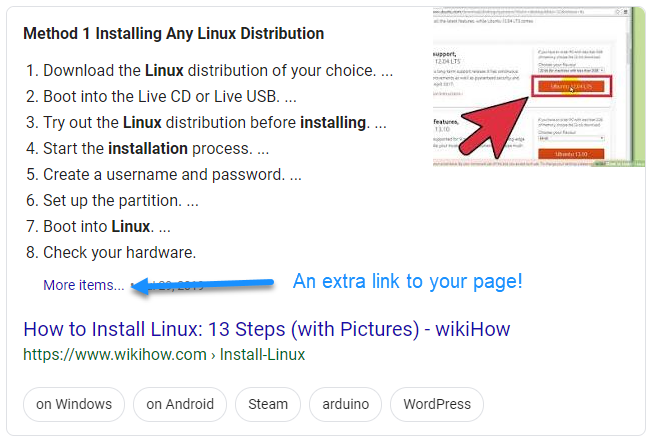
How to Get Started
If you’re new to competing for featured snippets, follow these steps to grab some low-hanging fruit. I’m starting with Ahrefs for ranking data, but most rank tracking tools should have a similar report.
- Retrieve your website’s rankings. Filter the results to only show the keywords with featured snippets, then export.
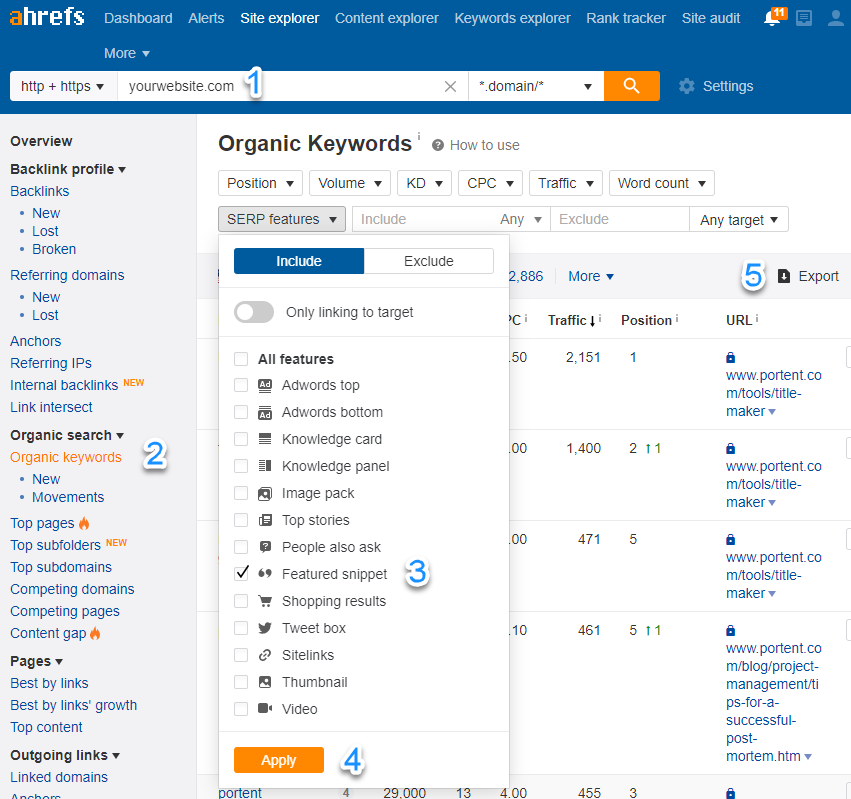
- Filter the exported spreadsheet in Excel to only show keywords where you’re in the first 10 results. If you don’t have any, then you need to go back to basics and get some first page rankings.
- Look through the spreadsheet to find keywords where your high-converting landing pages don’t have the featured snippet. Pick the page you want to start with.
- Go to the SERP for each of the keywords and examine the featured snippet. What are the featured snippets talking about? Are the existing featured snippets even relevant? Irrelevant snippets are easier to displace.
- Identify the content gap. Does your page talk about the same things as your competitors’ featured snippets? Is there an existing content section you can adjust or add a snippet candidate to?
- Write your snippet candidate. Write a 40-50 word answer to your target queries and make it the first few sentences of a relevant content section. Use a relevant section header. Use the active voice and directly answer the query. Check the character count against your competitors and try to be around the same or under.
- Ask Google to index the updated page. After publishing the updated content, go into Google Search Console and submit it to the index with the URL Inspection tool. This is a fast way to get Google to see the change.
- Wait and see. Sometimes your content will grab the featured snippet the next day. It could also take a while for Google to get around to testing your candidate.
- Try again. If you aren’t seeing your snippet after a month or two, repeat the process. Try focusing on a different aspect of the query in your answer.
Play Until You Win
The most convenient part of competing for featured snippets is that you can keep making attempts until you succeed. Google is frequently testing out snippet candidates to see which one produces the best user experience. If Google tests out your most recent snippet but doesn’t choose it as the primary, you can always try again. So long as your page is ranking in the top 10 base results, you have unlimited attempts.
Your competitors also have unlimited attempts at capturing the snippet. This is the most frustrating part. Featured snippets shift and fluctuate just like any other search feature, so you may not be able to hang on to them forever. You will need to monitor your traffic and rankings to detect when you’re losing a top position. If you do, you’ll need to start the competition process over again.
The post How to Compete for Featured Snippets in Google appeared first on Portent.




